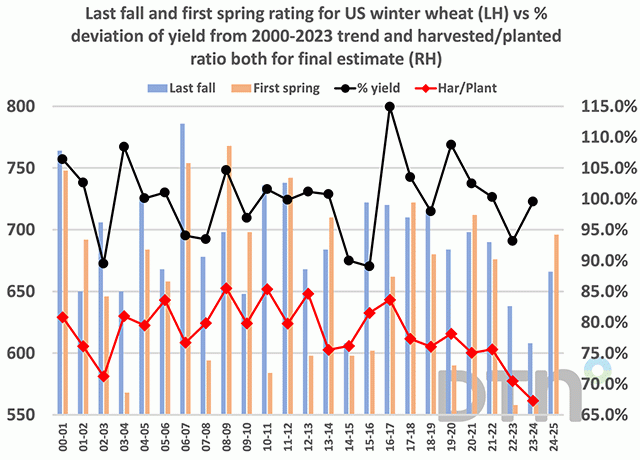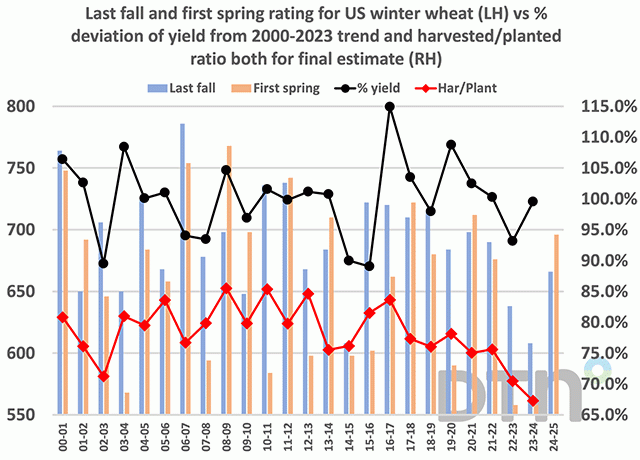Fundamentally Speaking
Winter Wheat Condition Ratings Start Spring in Good Shape
This week, in its first national winter wheat condition report of the spring, USDA showed 56% of the crop in good-to-excellent condition, which is double the 30% of a year ago.
The unrelenting drought in the Southern and Central Plains that harmed U.S. winter wheat over the past number of years appears to have loosened its grip. Consequently, U.S. winter wheat conditions -- at least at this stage of the growing season -- are among the best seen in recent seasons.
P[L1] D[0x0] M[300x250] OOP[F] ADUNIT[] T[]
This graphic shows the last fall crop conditions for the U.S. winter wheat crop, usually released the last week of November, and the first spring ratings, which are as of the first week of April. We use our usual ratings system where we weight the crop based on the percent in each category and assign that category a factor of 2 for very poor, 4 for poor, 6 for fair, 8 for good, and 10 for excellent and then sum the results on the lefthand axis. On the righthand axis is the percent the final U.S. winter wheat yield estimate deviates from the 2000-2023 trend and the final harvested-to-planted acreage ratio.
The 2022 and 2023 growing seasons were poor as the first spring rating each season was 558, ranking among the lowest ever. Interestingly, the final 2022 U.S. winter wheat yield was 47.0 bushels per acre (bpa) -- 6.8% below trend -- while the final 2023 yield at 50.6 bpa was just 0.5% below trend as moisture conditions improved over much of the Great Plains during the spring. That increased precipitation actually continued over the summer, where the first fall rating for the 2024/25 or this year's U.S. winter wheat crop came in at 666, the highest in three years.
Apparently, this past winter treated the crop well as ratings further advanced to this week's 696, which is only the third time since the 2013/14 season where winter wheat ratings improved from the last fall numbers to the first ones in the spring.
We should also note if these conditions persist through the spring and early summer we could not only see a very good winter wheat yield but a return to a more normal harvested-to-planted ratio. That has trended down for the past four years in a row linked to a lot of poor wheat abandoned with last year's 67.3% ratio the second lowest since 1917.
(c) Copyright 2024 DTN, LLC. All rights reserved.






Comments
To comment, please Log In or Join our Community .